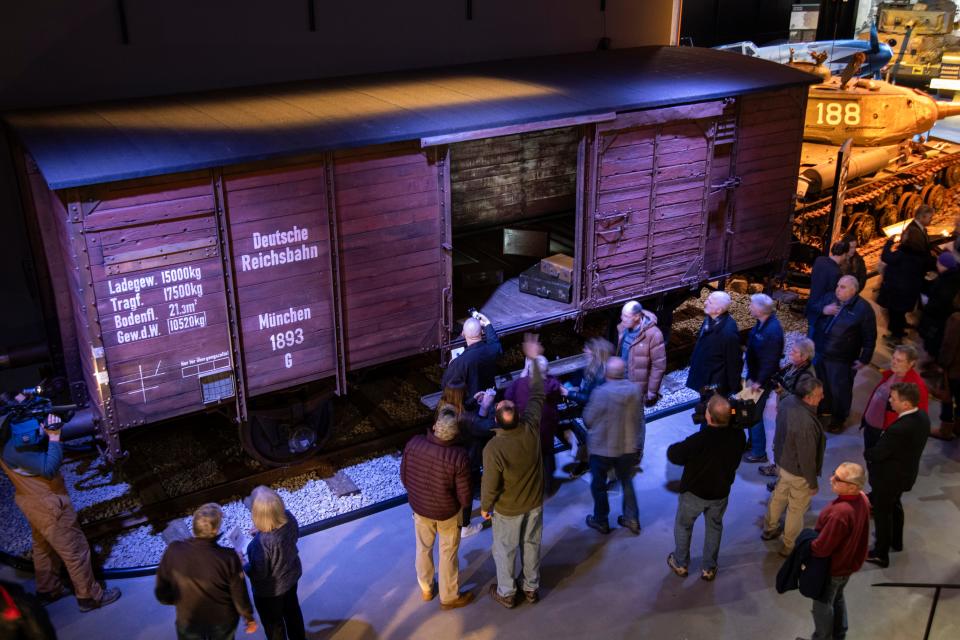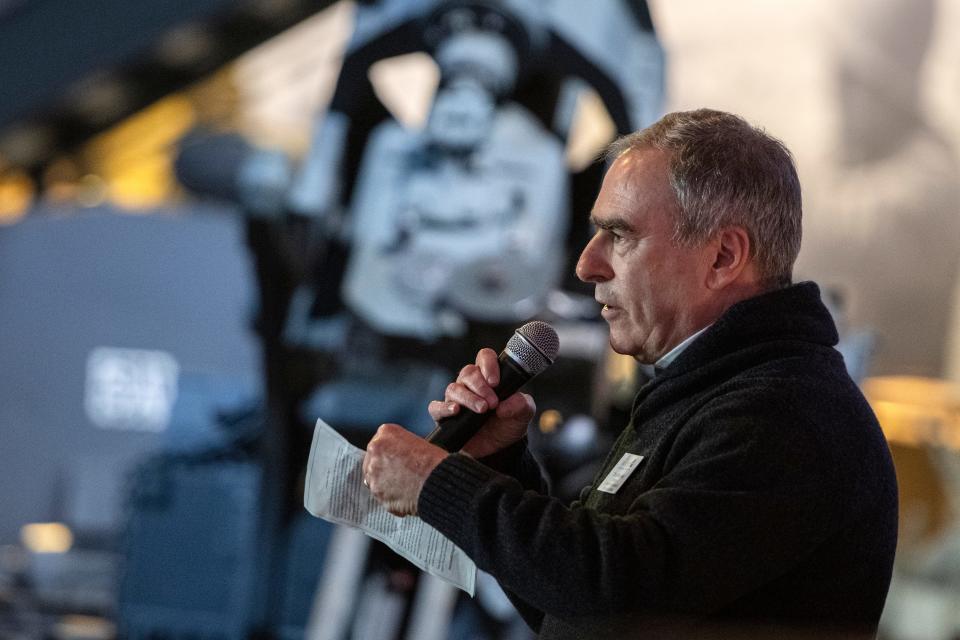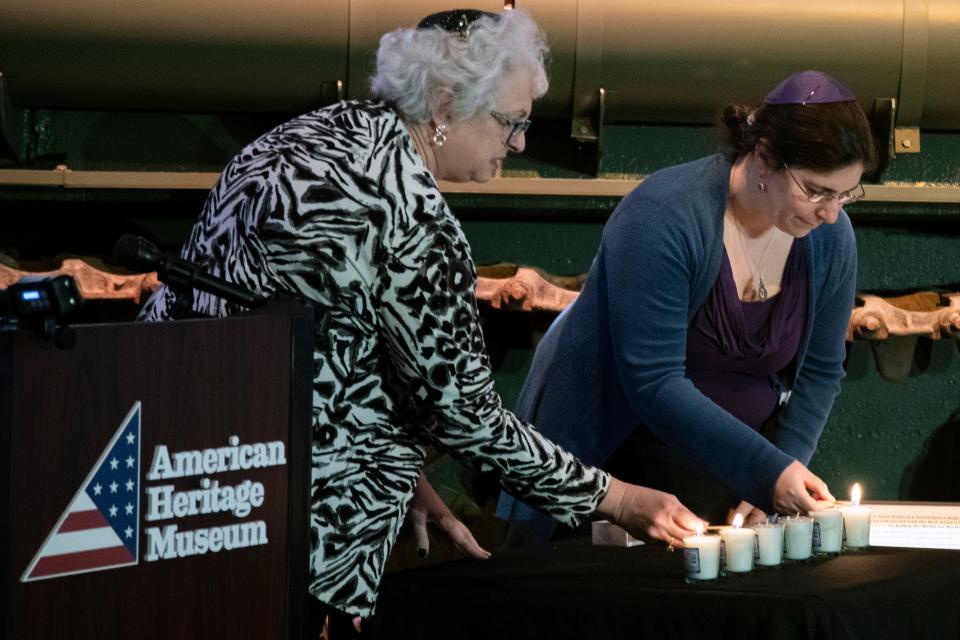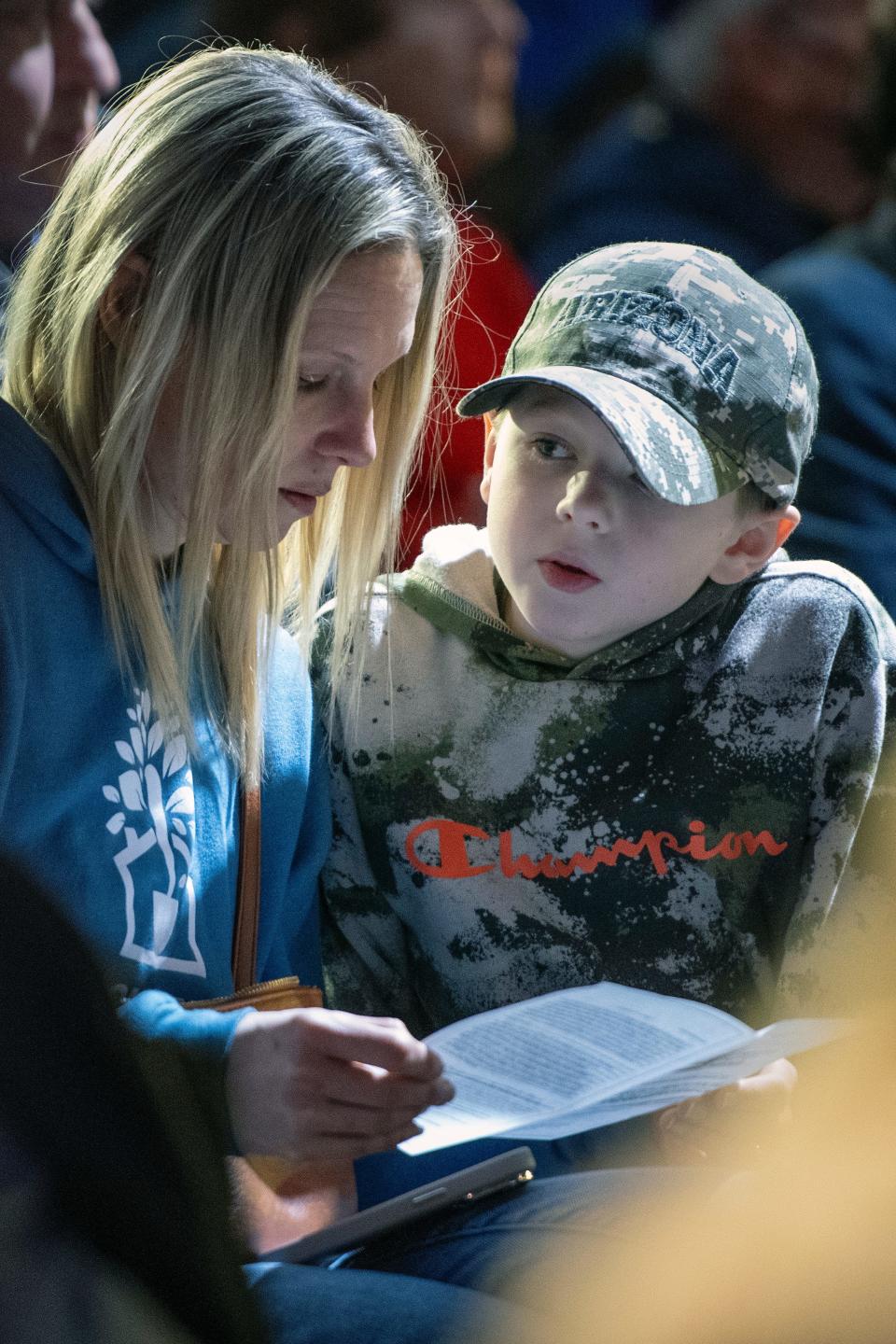A Holocaust-era train car is the newest artifact on display at a local museum
HUDSON — On Friday, Jan. 19, 1942, top Nazi officials met at a villa in the Berlin suburb of Wannsee to discuss what the German government planned to do with its captive Jewish population.
The horrifying decision, referred to as “the final solution,” was to systematically exterminate 6 million European Jews after sending them to concentration camps.
Eighty-two years later, the American Heritage Museum in Hudson unveiled a terrifying reminder of the rigid, systematic process that destroyed millions of lives and left a black mark on human history that can never be erased: an original World War II rail car from the Deutsche Reichsbahn, also known as the German National Railway.
The museum originally acquired the rail car, built in 1913, after it was discovered in an old railyard in Nuremberg, Germany. It was shipped to the U.S., where it has spent the past six months being restored by the museum team members.

Local museums: Nine smaller museums you may have forgotten about
"The car was kind of put away as surplus — really, it was considered junk," said Hunter Chaney, communications director for the American Heritage Museum. "We are often around the world looking to acquire very rare, very important, historical artifacts that help us tell the story of world history. So when we saw this, we thought this was the perfect artifact to help the general population engage in this history.”
Museum says rail car is same make and model as those which transported Jews to concentration camps
While the museum can't confirm whether the rail car it has on exhibit was used to transport people to concentration camps during the Holocaust, Chaney said that through its research efforts, the museum can at least determine it's the same make and model of railcar that was used for that purpose.
"We know when it was manufactured by the manufacturers stamp, (but) we don’t have 100% confirmation that this specific rail car was used to transport humans to concentration camps," he said. "It’s much more emblematic than being able to outright confirm that. All the rail cars that are currently on display in the U.S., none of them can really be confirmed that they were used for humans are not. It's the exact same type and model that we’ve seen through our research that was used to transport humans; that is done through looking at archival photographs to see what kind of cars were used during the time period.”

During a dedication ceremony for the car last Friday, Christopher Mauriello, a professor at the Center for Holocaust and Genocide Studies at Salem State University, noted that the rail cars, which were packed with as many as 150 men, women and children, were used as an execution tool during the Holocaust as they were sent on days-long journeys throughout Europe.
"The rail car journey was a form of genocide," Mauriello said. "It was a way to kill people, it was not just transportation — it was mass murder. The beginning of alienation and dehumanization begins here, in the rail car."
World War II history comes alive for Jewish residents
Friday's ceremony attracted the support of various Jewish community members. Besides Mauriello, Ambassador Meron Reuben, consulate general of Israel to New England, spoke to visitors, mentioning that in a museum that is full of tanks and aircraft, the rail car stands as a different reminder of what the horrors of war can do to people away from the battlefields.
"What the Nazis managed to do was decimate practically all of the Jewish population across Central and Eastern Europe," Reuben said. "The decision by this museum to bring the railroad car that is behind us is not only symbolic of the second world war, it stands out among the different mechanisms of war. It is an added focus on what war can do, what happened and not only that we are talking about soldiers on the battlefield, but the human suffering that came along with the war."

The unveiling of the car at the museum comes during a time when hate crimes and rhetoric against Jewish people in the United States has been on the rise. The FBI released data last October showing that in 2022, Jewish people were victims for more than half of the religious-based hate crimes in the country, and had reported six times as many hate crimes against them as the next largest religious group.
Cantor says exhibit helps future generations learn of hatred against Jews
Vera Broekhuysen, a cantor with Congregation Beth El of Sudbury, said that by creating exhibits such as the one featuring the rail car, the history of violence and hatred aimed at the Jewish population can be on display for future generations to learn.
"Antisemitism very often arises from ignorance," she said. "It's very important to have people come here and learn about the history of that hatred, so when somebody sees a swastika or hears a Nazi slogan, they know that means death, destruction and indignity and humiliation."

'Fighting is never done': Hopkinton World War II vet, 101, visits American Heritage Museum
Ronald Saloman, 90, of Shrewsbury, was among those who attended the ceremony. He said he was 8 when the U.S. got involved in World War II.
"I remember where I was on Pearl Harbor Day, and I have family in Israel know, probably about 40 people when you count them all up," he said. "I found this very emotional today. It's absolutely important to realize historically that people can do things like this. That you can have this kind of mindset, to try and devastate and wipe out people."
This article originally appeared on MetroWest Daily News: Nazi rail car exhibit brings horrors of Holocaust to life in Hudson

